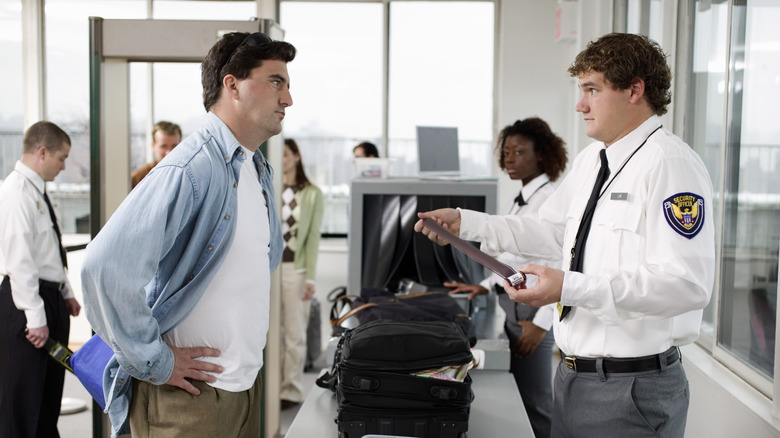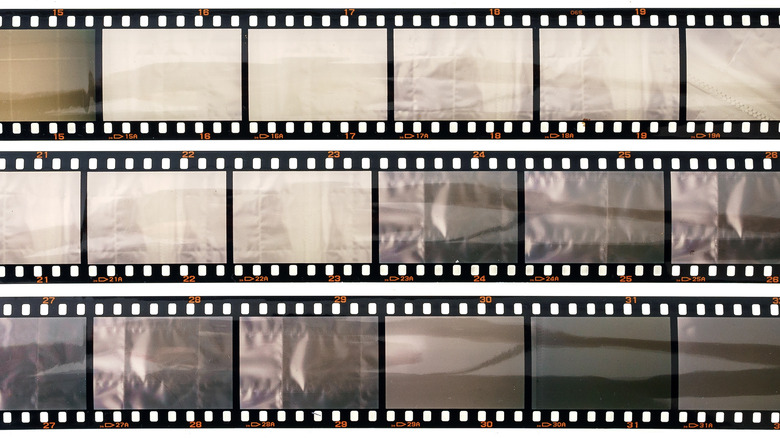The Clever Way To Bring Film Through TSA Without The X-Ray Scanners Ruining It
Have you ever traveled, taken some film shots, came back home and processed them, and realized your photos looked a little off? Maybe the details got washed out, the colors not as colorful as you remember, or there's more grain than you intended: This is called "fogging." Unfortunately, it's irreparable, and chances are, those TSA X-ray scanners at the airport did it.
Most film lovers might not realize that passing unprocessed film (negatives) through airport scanners can severely damage it. This happens because the scanner's X-rays affect the film's quality and the final product of your images, resulting in lost time, resources, and perhaps worst of all, art. Although concerning, do not fear. There are several clever ways to bring your film through TSA without the X-ray scanners ruining it.
The number one mistake you want to avoid is keeping your film in checked baggage. Always keep your film close to you and inside your carry-on. If you have to check your carry-on due to its weight or size, you should remove your film and carry it personally.
This precaution is crucial because checked baggage goes through more powerful X-ray equipment that can expose the film, guaranteeing its ruined fate. The same goes for any film still inside your camera or a disposable film camera. No matter how tempting, you are better off sacrificing whatever remaining shots are left on the roll than ruining what you have already captured.
Technicalities and implications of the airport scanner
In more technical terms, this happens because photographic film absorbs radiation, which causes photographic fog. However, this damage can vary. A 2000 study by NASA concluded that negative film is significantly more sensitive than positive film. Regardless of which, the lower-speed films (under ASA/ISO 800) held up better than those with a higher speed (over ASA/ISO 800), displaying less grain and superior resolution.
Airport scanners use radiation to penetrate luggage and reveal its contents, ensuring security by identifying prohibited items. Bad news for your film, but good news for security: These scanners are only getting more powerful. Since 2020, most U.S. airports have upgraded from X-ray to CT (computer tomography) scanners. That's why Kodak, the famous film supplier company, decided to perform a test for themselves while working with the TSA at JFK International Airport. They discovered that one CT scan was enough to damage the film compared to the less-severe X-ray.
Kodak advises travelers to take extra precautions for certain types of film when going through airport security. Specifically, take extra care if you're traveling with film that has an ASA/ISO rating of 800 or higher, film intended to be underexposed, film you plan to push process, as well as sheet film, large format film, medical film, scientific film, motion picture film, professional-grade film, or any film that will be subjected to X-ray screening more than five times.
How to keep your film safe
Going through security can trigger some airport anxiety. However, preparation is key to a smooth and safe screening. Pack your film in clear plastic bags before heading to the airport. This is especially useful for those traveling with many rolls. It will make it easier for TSA agents to inspect the film without touching it directly, speeding up the process.
As per TSA guidelines, agents are trained to examine film and cameras manually without the use of X-rays or CT scanners. At the checkpoint, request a hand inspection of your film and explain that the film is high-ISO and could be damaged by X-rays. Nonetheless, be prepared for variability in responses from the agents and remain polite and patient.
If you put film in your carry-on, be mindful of the risk of damage from a single scan. Removing the film is always advisable, especially if your carry-on may require a second X-ray scan. Multiple exposures to X-ray scanning deliver cumulative damage to the film.
Another trick is getting a lead bag, which can help shield your film from X-rays. However, internet forums advise that these can sometimes trigger more thorough inspections, making the bag's contents appear suspicious. If you choose this route, be prepared to explain the bag's purpose and still request a hand check. Lastly, if you are traveling with motion film, you can rest assured during ETD (explosive trace detection), which has been proven to be safe. So, travel, shoot film, and protect it at all costs.

